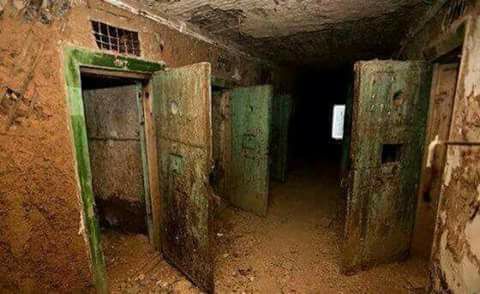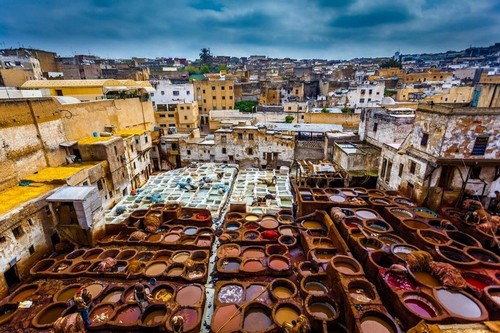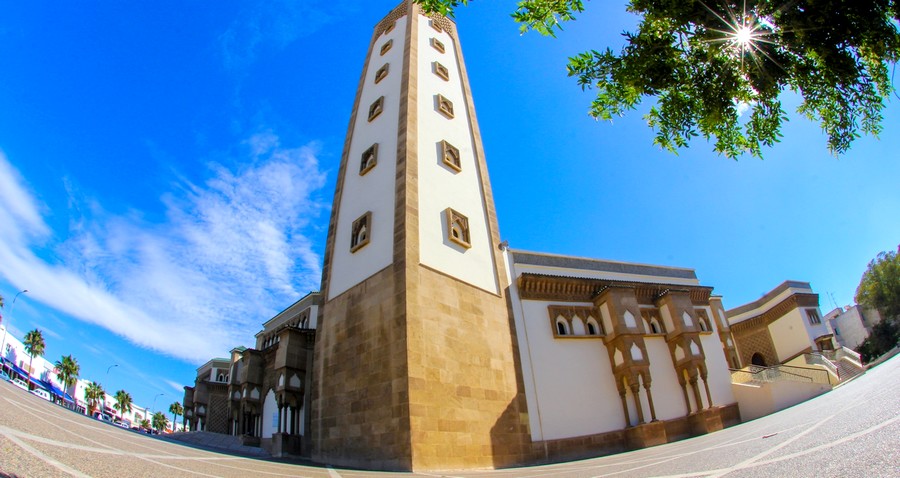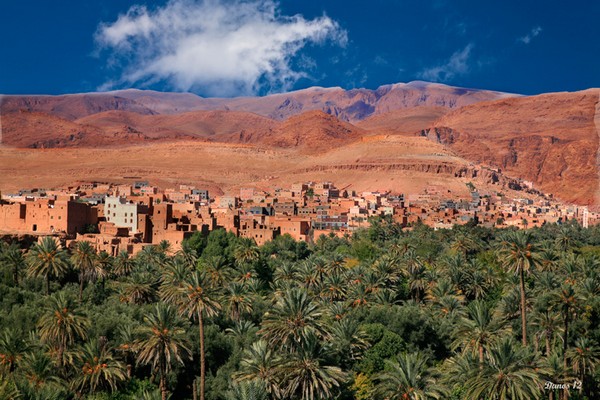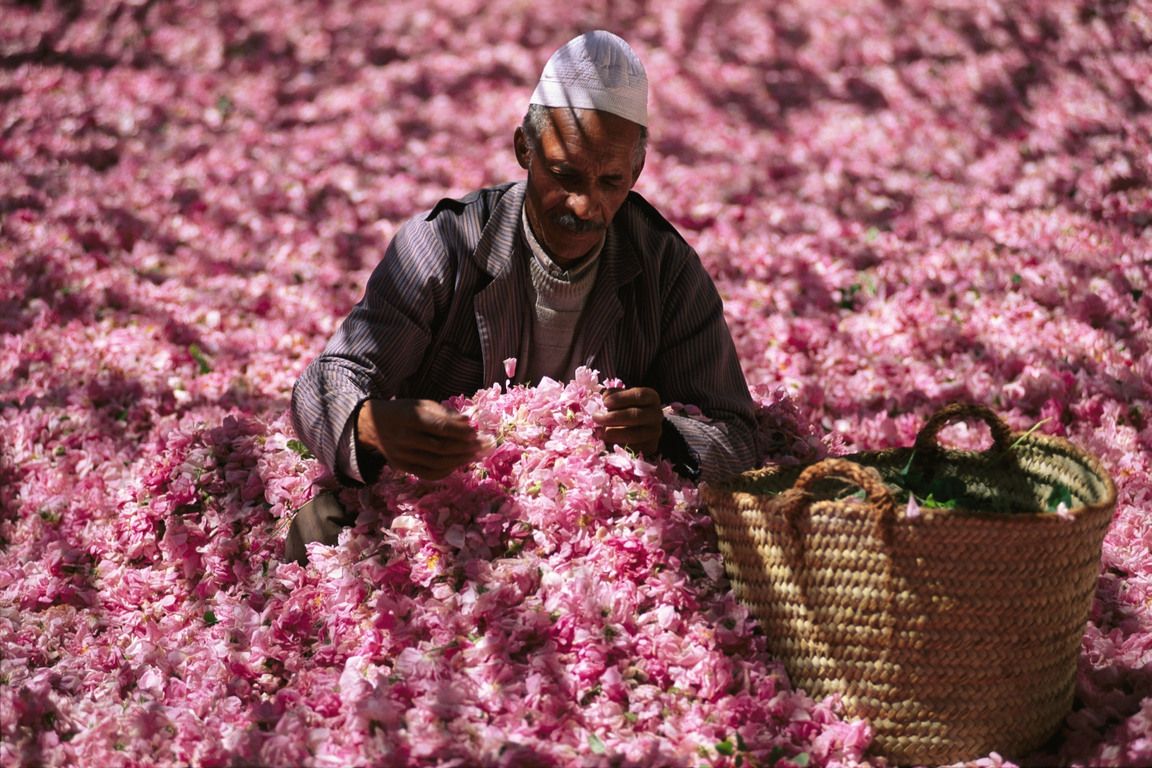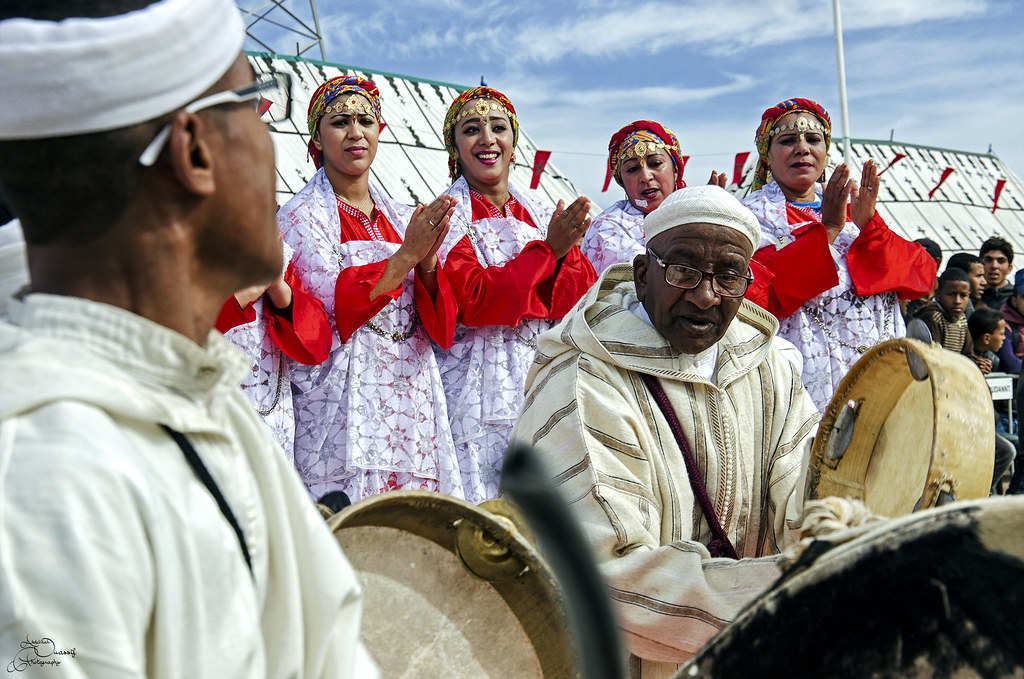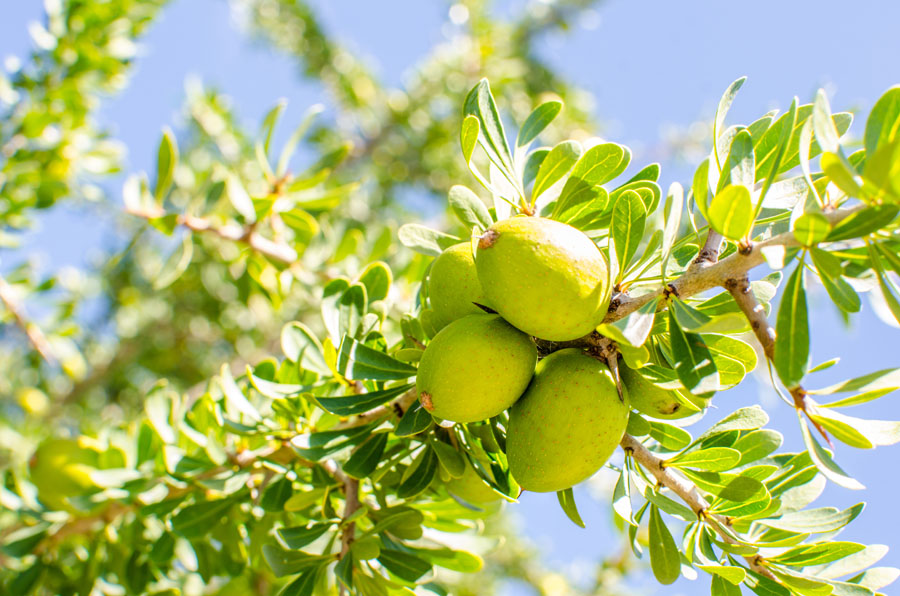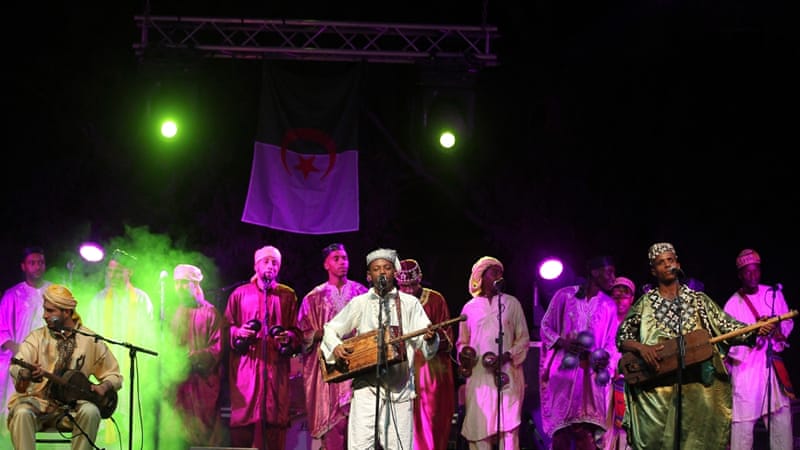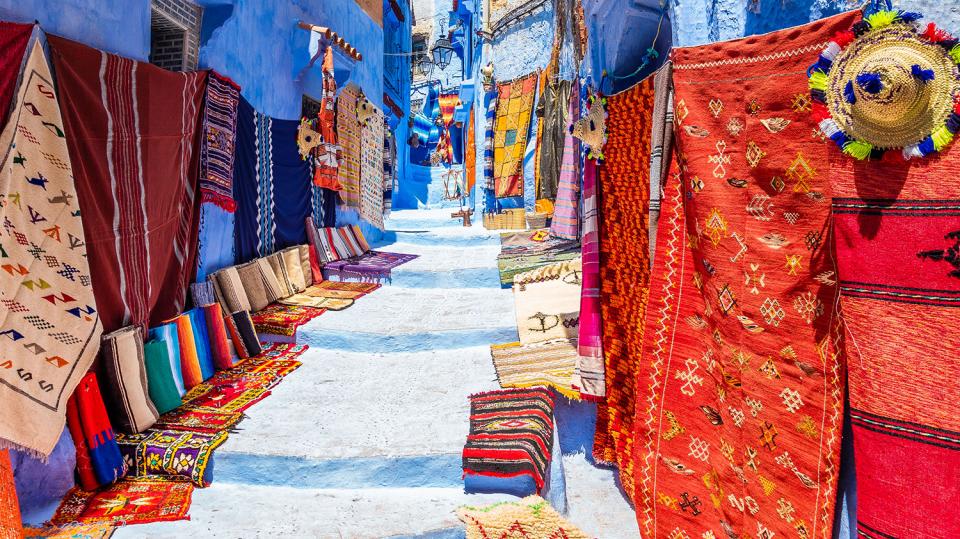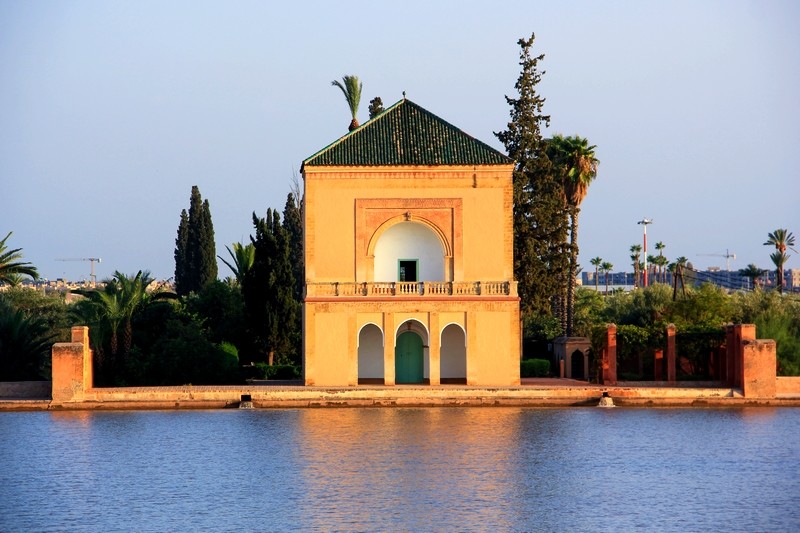Marrakech whose capital stationed days and Unitarian rule, and the city nicknamed the red relative to the predominant color on the buildings, and is described in a cheerful, where the obvious spirit of humor and a tendency to joke among her family.
Europeans describe it as the enchanting city of nature and healthy climate. Making thousands of them choose to stability, and international personalities including big names in the world of politics, art and sports.
Whenever we mention the label of " seven men " we feel eager to know who are those 7 men who marked the history of the ochre city :
-
1 – Sidi Youssef Ben Ali.
-
2 – Qadi Ayyad.
-
3 – Sidi Bel Abbas.
-
4 – Sidi Suleiman Al Jazuli.
-
5 – Sidi Abdel Aziz.
-
6 – Sidi Abdullah Ghazouani.
-
7 – Imam Souhaili.
Site
Marrakech is located in the south of Morocco at the foothills of the Atlantic Mountains, thirty kilometers from it, 450 meters above sea level, 327 km from the capital Rabat, it is characterized by a semi-dry climate, mild, humid winters and hot dry summers.
The area of the city is estimated at about 230 square kilometers, and it has been described as "the red, spacious, and delicate city, between the free, hot, shady, snow and palm trees."
Population
Marrakech is classified as the third largest city in Morocco in terms of population, with a population of more than one million, out of the total population of the country, according to official estimates, most of them work in the services sector, modern and traditional industry, free business and public jobs.
Economy
The city's economy depends heavily on tourism and real estate activities, as it is based on traditional industry as an important tributary of the tourism sector, where more than forty thousand people work in the manufacture of pottery, copper, leather, carpets (carpets) and others, in addition to some exhibitions such as the Marrakech International Exhibition of Industries and Aviation Services.
The city has a modern network of transportation and roads, and it has a railway and an international airport, which is the second in Morocco in terms of passenger traffic.
Marrakech was chosen the best new tourist destination in the world in 2015, in a ranking prepared by the global travel website (Trip Advisor), as Marrakech overtook the most ancient world capitals, including London, Rome and Paris.
And "South Rose" ranked first on the national level, in terms of the number of city tourists, with a number exceeding two million tourists in 2014, and it ranked seventh in the Arab world, in the results of cities that witnessed the largest number of visitors, according to a report of the British Independent newspaper.
Marrakech is the first tourist center in Morocco, and it has an important hotel infrastructure, as it contains more than 1400 housing units, including more than 170 classified hotels.
History
The founding of Marrakesh dates back to the time of the Almoravids, and accounts differ on the interpretation of the name; Some see Marrakesh as an Amazigh word meaning "pass by quickly", and others see "ach" as the name of an ancient god.
There are those who believe that the name "Marrakech" is due to the Amazigh word "things n Ako", and pronounce Amazighi Omorakesh, it means the country of God or the land of God, a sign of its global dimension, and belonging to all of humanity.
The name of Marrakesh was given to all of Morocco in the past, since it was established as the capital of the Almoravids until the era of the French occupation in the modern era, and this name is still used in all languages, such as Persian (Marrakech), Spanish (Marwikos) and English (Morocco).
Historical sources say that the construction of the first nucleus of Marrakech was in the year 1070 by a group of Berber tribes who came from the desert and chose its location because of its proximity to the Latuna desert and the mountains of Masamda.
It is described as the red city, as most of its homes are painted red, and it becomes more beautiful and bright as the sunset lights reflect on their homes.
Marrakech is also known as the “city of seven men”, and researchers attribute this to a group of leading scholars and Sufis who lived in the city and played a major role in spreading political, intellectual and educational awareness among its residents, and they are respectively: Youssef bin Ali Al-Sunhaji, Ayadh bin Musa Al-Yehsibi, and Abu Al-Abbas Al-Sabti, Muhammad Bin Sulaiman Al-Jazouli, Abdul Aziz Al-Tabaa, Muhammad Bin Ajal Al-Ghazwani, and Abdul Rahman Al-Dhir.
The city witnessed a great urban and organizational prosperity during the reign of Sultan Yusuf bin Tashfin (1061-1107) and became the capital and political and cultural center of the Almoravid state and the entire Islamic West.
Al-Himyari described it in his book Al-Rawd Al-Mu'tar in Al-Akbar Al-Uqarat as the largest “Far Maghreb city, its trade increased and people competed in building in it and built hotels and baths in it.
After the year 1147 the Almohads State contributed to the development of the city after it took it as a capital, and left landmarks still standing there, and all the Marinids who came after them - although they did not take it as a capital - and the Sa’dis, made the walls of the bracelets and buildings be painted in brick and clay closest to the Hamra in line with the title The Red City.
Under the rule of the Alevis, it received attention in the days of Sultan Sidi Muhammad, and it was built with many neighborhoods and landmarks, and a number of its mosques, walls, and landmarks were restored.
Marrakech is rich in historical monuments and cultural witness to the ancient history, including the walls of Marrakech with an estimated length of about nine kilometers, and the doors of its most prominent and bab agnaou Doukkala.
It contains the Almoravid dome, and it is a living witness that highlights the beauty of the Almoravid architecture, and it carries art reliefs with arches and shapes that resemble a seven-pointed star.
Some ancient historians and geographers consider the magnificent palace in Marrakech to be one of the wonders of the world because it contains four gardens, motifs, marble, crowns, and columns covered with gold leaf and multicolored zellij.
The city's famous mosque Koutoubia school son of Joseph, and the Jamaa El Fna square, pilgrimage to visitors from inside and outside Morocco, and considered by the UNESCO in 1997, a human oral heritage.
The “Palm Capital” has many other historical monuments and monuments, among them the “Majorelle Gardens” that contain rare plants and flowers coming from the five continents, and the “Menara Gardens” which are surrounded by the Great Manara Reservoir.
